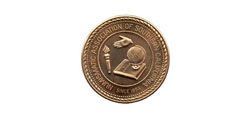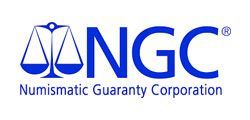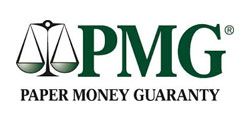What You Should Know About Selling Gold
Understanding the nuances of selling gold can greatly improve your financial decision-making. Gold is more than a precious metal; it represents a strategic asset that can provide liquidity, hedge against economic uncertainty, and enhance personal wealth. However, navigating the gold market requires knowledge, preparation, and attention to detail. This comprehensive guide examines key considerations, market dynamics, and strategies for selling gold efficiently and profitably.
Examine Current Market Trends
The demand for gold fluctuates due to economic uncertainty, geopolitical tensions, and investor sentiment. Gold is widely viewed as a haven during periods of instability, leading to increased interest among both retail and institutional buyers. According to Globe Newswire, the gold bullion market size has grown rapidly in recent years. It will grow from $67.75 billion in 2023 to $76.58 billion in 2024. This surge illustrates how gold remains a preferred asset for securing value in volatile times.
For those selling gold, staying aware of market shifts is essential to maximizing returns. Gold prices do not move in isolation; they are heavily influenced by global economic conditions and financial policies. Monitoring daily and long-term price trends allows sellers to identify patterns and potential price spikes. Inflation rates are particularly significant, as rising inflation often drives investors toward gold as a hedge, increasing demand and pushing prices higher. Currency fluctuations also play a major role—when the value of the US dollar weakens, gold typically rises in price, creating an opportunity for sellers. Additionally, global financial policies, including central bank actions, trade agreements, and interest rate adjustments, can impact investor behavior and market liquidity. By paying close attention to these factors, sellers can time their transactions strategically, choosing moments when demand is strong and prices are favorable, rather than selling impulsively during low-value periods. This proactive approach ensures that sellers make informed decisions, reducing risk and maximizing the financial benefits of their gold assets.
Historical data offers valuable insights for individuals considering selling gold. Gold prices respond dynamically to economic conditions, sometimes showing both stability and volatility. For instance, during periods of high inflation or recessions, gold often appreciates as investors seek alternatives to fiat currency. By reviewing past market behavior, sellers can anticipate price patterns and make informed decisions on timing and pricing strategies.
Understanding the historical context also highlights potential risks and opportunities. Gold’s long-term performance has demonstrated resilience, making it an attractive option for both short-term and long-term sellers aiming to maximize returns.
Evaluate Influential Market Factors
Multiple forces influence gold prices. Interest rates, currency values, global conflicts, and macroeconomic indicators all affect supply and demand. Central banks are particularly significant players, purchasing or selling gold reserves to influence national and international markets. Political instability can also heighten demand for gold as a secure asset.
When selling gold, staying informed about these factors can provide an edge. Sellers who monitor market developments, government policies, and international events are better positioned to identify favorable selling windows and maximize potential profits.
Understand Supply and Demand Dynamics
The balance between supply and demand directly impacts the profitability of selling gold. Limited mining output combined with strong consumer interest can drive prices upward, while excess supply may depress market value. Sellers should aim to understand these market signals and identify periods of peak demand to ensure they achieve the best price for their assets.
For investors and casual sellers alike, recognizing supply-demand dynamics helps anticipate market shifts and align sales strategies with the most profitable conditions.
Assess the Types of Gold to Sell
Gold comes in various forms, and the type you own can significantly influence your selling options and profit potential. Common categories include gold coins, bars, jewelry, and scrap gold. Each form carries unique valuation considerations:
- Gold Coins vs. Gold Bars: Coins often include numismatic or collector value, in addition to gold content, whereas bars are valued for standardized weight and purity. Sellers must weigh immediate liquidity against long-term investment potential.
- Jewelry Gold Considerations: Gold jewelry combines artistic, brand, and material value. Resale prices may not match original purchase costs, but designer or estate pieces can command premiums if marketed effectively.
- Scrap Gold Understanding: Scrap gold, such as broken jewelry, old coins, or industrial pieces, can be melted and repurposed. Accurate assessment of gold content is crucial for ensuring a fair selling price.
Recognizing the type of gold in your possession allows you to select the most suitable selling method and optimize profits.
Determine Gold Value Accurately
Accurate valuation is a cornerstone of successful gold sales. Sellers should consider several critical factors:
- Understand the Karat System: Gold purity is measured in karats, with 24 karats representing pure gold. Lower karat values indicate alloys, which reduce intrinsic value. Understanding karats ensures appropriate pricing.
- Weigh Your Gold Precisely: Use calibrated scales to measure in grams or troy ounces. Accurate weight measurements prevent undervaluation and protect your returns.
- Assess Gold Purity: Professional tools such as acid tests, electronic testers, or X-ray fluorescence can verify purity. Correct evaluation guarantees competitive pricing.
- Consider Current Spot Prices: Gold spot prices fluctuate daily based on supply-demand dynamics and market sentiment. Observing spot trends allows sellers to time transactions effectively.
- Use Professional Appraisals: Certified appraisers provide reliable assessments for high-value gold, ensuring fair pricing and informed decision-making.
Explore Selling Options
There are multiple channels available for selling gold, each with its own benefits:
- Leverage Online Gold Buyers: These platforms offer convenience, competitive pricing, and secure shipping options. Sellers receive instant quotes and can compare multiple offers without leaving home.
- Engage Local Jewelry Stores: Local stores provide personalized assessments and often immediate payment. Comparing offers from multiple locations ensures maximum returns.
- Utilize Pawn Shops: Pawn shops offer speed and convenience, but often at reduced rates. Sellers should carefully review terms and balance quick cash needs with profitability.
- Participate in Auctions: Online and live auctions can drive competitive bidding, increasing sale prices. Effective marketing and platform research are critical to success.
- Consider Private Sales: Selling directly to individuals may yield favorable prices if you have access to informed buyers. Detailed documentation of transactions safeguards both parties.
Navigate Legal and Logistical Challenges
Selling gold comes with several legal and logistical considerations:
- Understand Tax Implications: Capital gains taxes may apply based on jurisdiction and profit. Accurate reporting and record keeping are essential for compliance.
- Transport Gold Safely: Secure packaging, insured transport, and reliable couriers minimize risks during shipping.
- Avoid Fraud: Vet buyers carefully and use verified payment methods to prevent scams.
- Maintain Transaction Documentation: Records of appraisals, ownership, and agreements protect against disputes.
- Understand Import/Export Regulations: International transactions may be subject to taxes, duties, and regulatory restrictions. Consulting legal experts ensures compliance.
Apply Strategies for Maximizing Profit
Maximizing returns from selling gold requires strategic planning and informed decision-making:
- Identify Optimal Selling Times: Align sales with favorable market conditions and economic trends to increase revenue.
- Use Effective Negotiation Techniques: Defend your asking price with evidence of purity, weight, and market value. Start offers slightly higher to facilitate negotiation.
- Leverage Market Analysis: Analyze historical and current market data to predict price movements and optimize sales.
- Build a Selling Network: Relationships with buyers, appraisers, and market participants provide exclusive opportunities and insights.
- Balance Long-Term vs. Short-Term Holds: Determine whether immediate sales or holding gold for appreciation aligns with your financial goals.
Selling gold effectively requires a comprehensive understanding of market dynamics, valuation techniques, and strategic selling methods. By staying informed about current trends, accurately assessing your gold, exploring multiple selling channels, and implementing sound strategies, you can maximize returns on your gold assets. The growing market for gold bullion underscores the opportunities available for sellers in today’s economy.
For expert assistance and competitive offers on selling gold, consider working with Golden Peaks Coin, Gold & Silver. Our experienced team can guide you through the process, ensuring you make informed decisions and achieve the best value for your gold.












Share On: